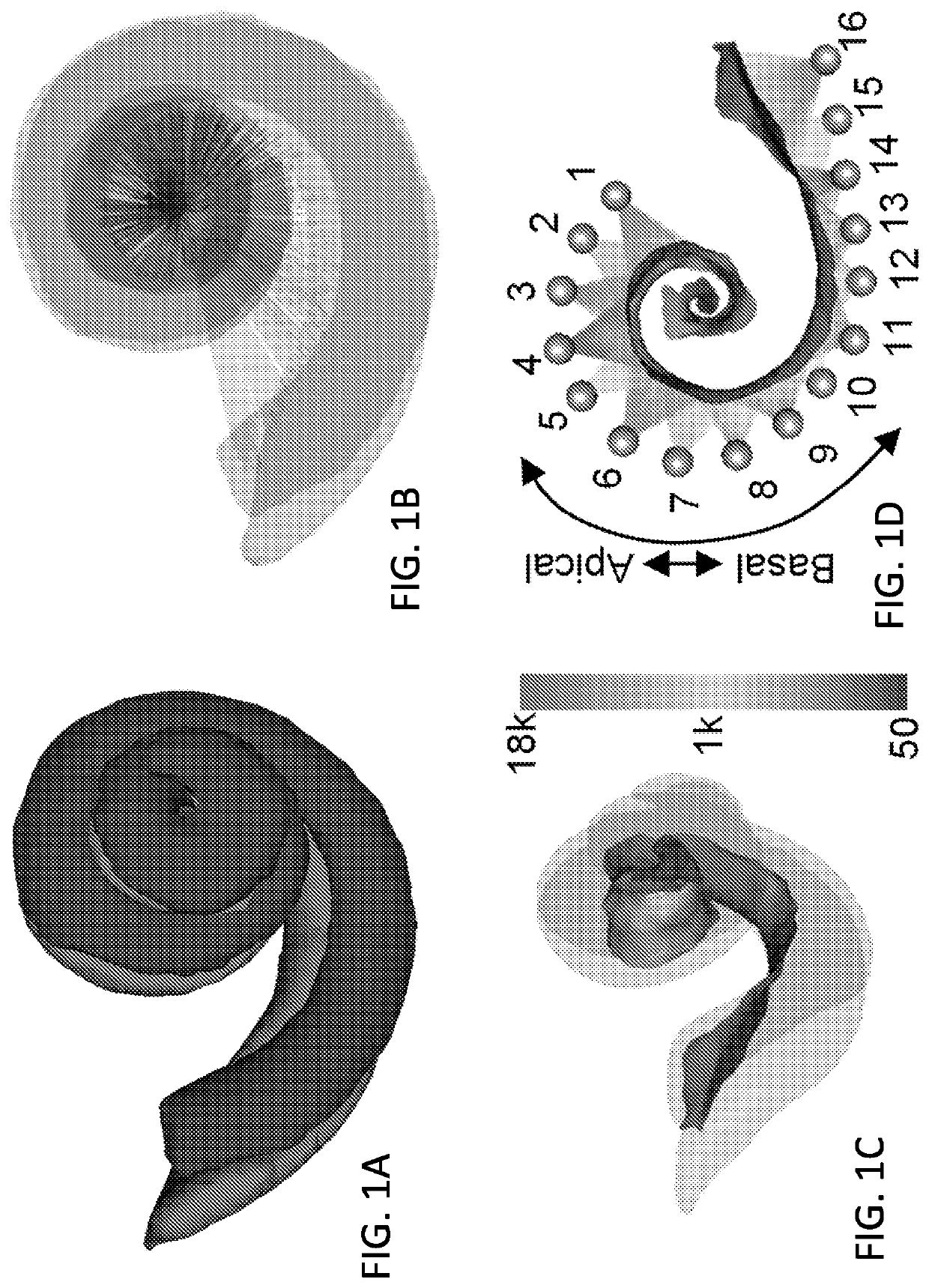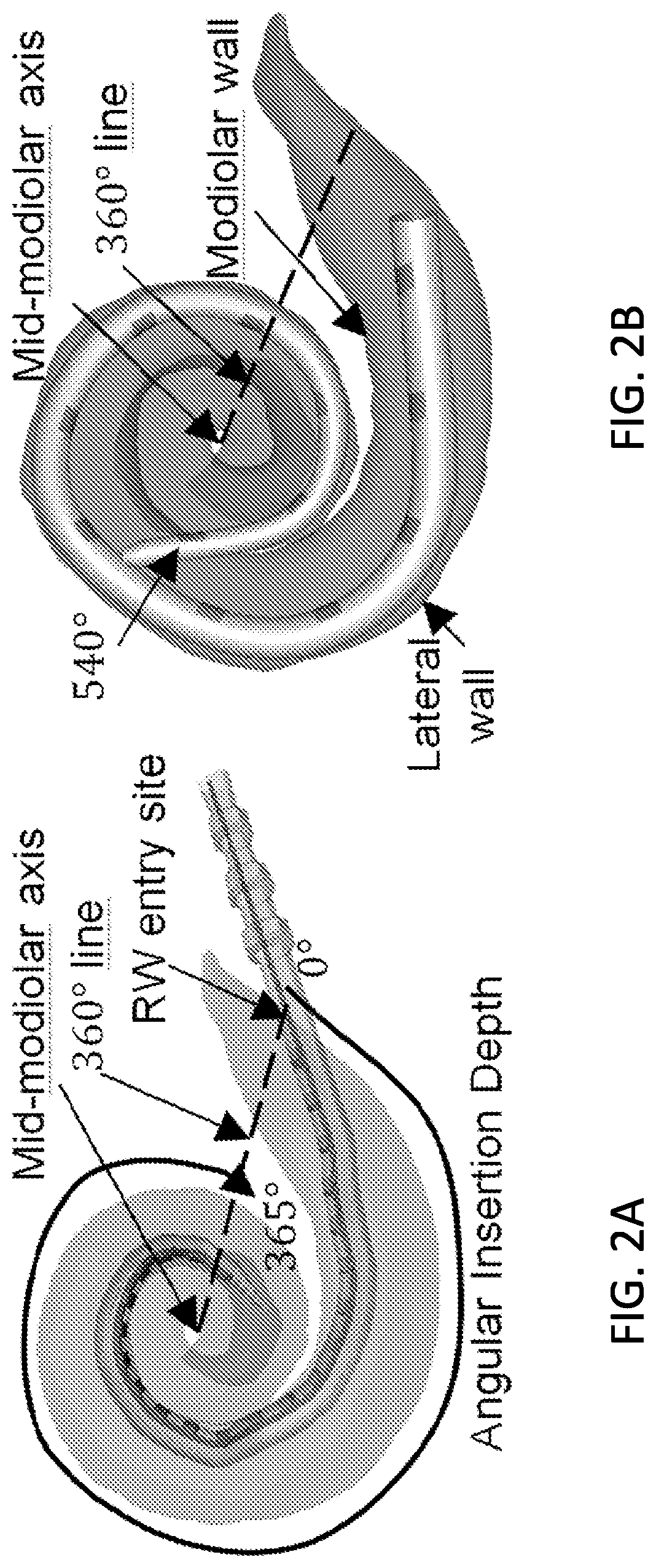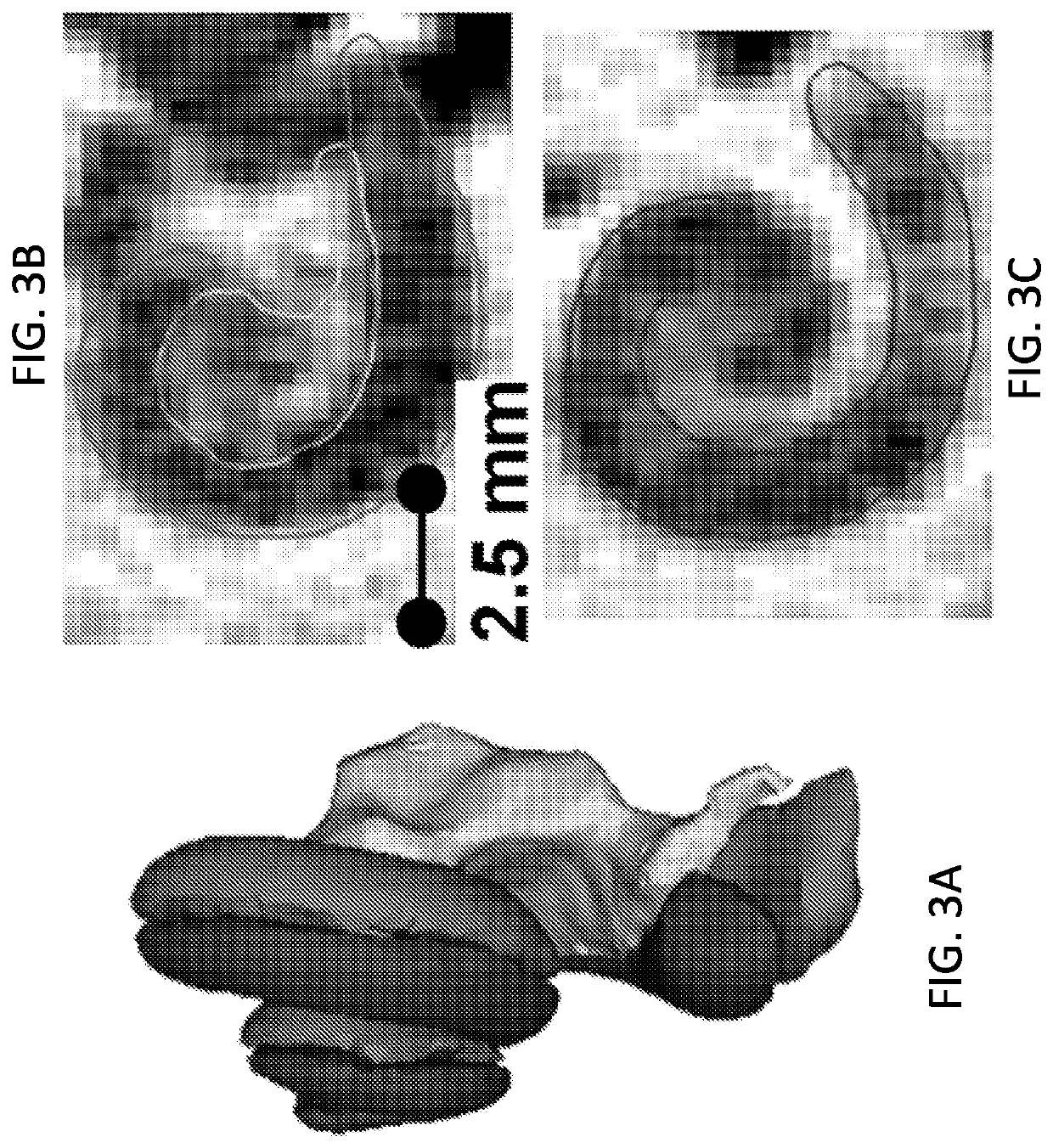Methods and systems for optimizing selection and placement of cochlear implant electrode arrays using patient-specific cochlear information and applications of same
a cochlear implant and electrode array technology, applied in the field of cochlear implants, can solve the problems of poorer outcomes, low patient-specific attention for optimizing placement of patient-specific electrode arrays, and no patient-specific approach is in widespread use today, and achieves the effect of improving outcomes
- Summary
- Abstract
- Description
- Claims
- Application Information
AI Technical Summary
Benefits of technology
Problems solved by technology
Method used
Image
Examples
example
Preliminary Results with Image-Guided Cochlear Implant Insertion Techniques
[0240]In this exemplary example, we present preliminary results from a blinded, randomized temporal bone study comparing final EA position for cochleae implanted with customized optimal insertion plans versus suboptimal insertion plans.
Methods
[0241]According to the invention, analysis of temporal bone anatomy, i.e., the shape of ST and SV, in the pre-operative CT image can be used to recommend an approach vector, array base insertion depth, and AOS depth and orientation for pre-curved EAs. To segment ST and SV, we use a shale model such as a non-rigid statistical shape model [27] created with μCT images of 9 cochleae specimens in which intra-cochlear structures are visible [11-12]. These models are then automatically fit to the external boundary of the patient cochlea that is visible in conventional CT allowing highly accurate estimation of the position of internal cochlear structures not visible in the CT. F...
PUM
 Login to view more
Login to view more Abstract
Description
Claims
Application Information
 Login to view more
Login to view more - R&D Engineer
- R&D Manager
- IP Professional
- Industry Leading Data Capabilities
- Powerful AI technology
- Patent DNA Extraction
Browse by: Latest US Patents, China's latest patents, Technical Efficacy Thesaurus, Application Domain, Technology Topic.
© 2024 PatSnap. All rights reserved.Legal|Privacy policy|Modern Slavery Act Transparency Statement|Sitemap



